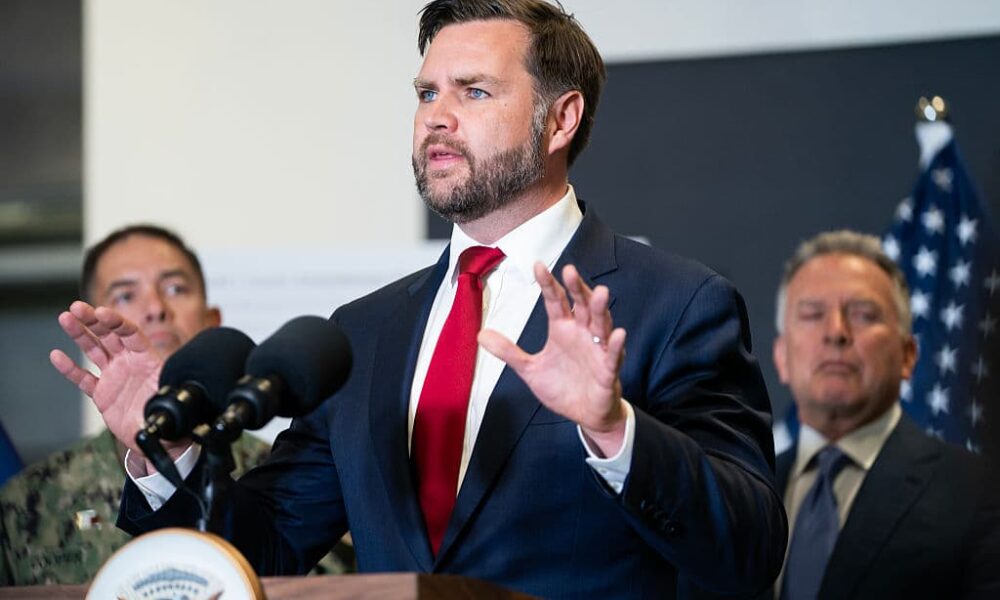UPDATE: Tensions are escalating as Vice President JD Vance visits Kiryat Gat, Israel, promoting a controversial 20-point Gaza plan amidst growing concerns about Hamas’s rapid regrouping. Just announced, the vice president insists that progress is being made, despite fears among Israelis that this plan could destabilize the region further.
During a press briefing at an American military facility earlier today, Vance dismissed media narratives focusing on setbacks, stating, “It’s not the end; it is, in fact, exactly how this is going to have to happen.” He expressed optimism about future peace agreements between Israel and neighboring nations, citing interest from Gulf Arab states in normalizing relations.
However, Israelis are increasingly alarmed by Hamas’s resurgence in Gaza, which they view as an immediate threat that could unravel the fragile peace. Observers point to the involvement of Turkey and Qatar in supporting Hamas, raising questions about the viability of the U.S.-led plan. Professor Doron Matza of Achva College argues that the plan’s complexity could hinder its success, stating, “There are too many power centers, and too much internationalization.”
As Prime Minister Benjamin Netanyahu hints at potential agreements with countries like Indonesia and Saudi Arabia, Israeli officials are worried that the U.S. vision may not align with ground realities. Matza warns that the ideological motivations of Middle Eastern actors differ significantly from the economic incentives driving American proposals.
Vance’s comments come amid fears that leaving Hamas as the dominant power in Gaza could have dire consequences. Recent reports indicate that Hamas has taken control of half of the “technocrats” slated to govern Gaza under the Trump plan, with these appointments approved by Arab mediators. “Almost everything that happens in Gaza, Hamas has a hand in it,” says Joe Truzman, editor at the Foundation for Defense of Democracies.
Vance insists that Gaza’s reconstruction will proceed only in areas where Hamas is absent. However, the Biden administration is urging Israel to adopt a more tempered approach to Hamas violations. The cease-fire, which was supposed to bring hostages home, is facing challenges, with reports that remains of deceased captives are still being recovered from rubble.
Hamas committed to releasing hostages within the first 72 hours of the cease-fire, yet progress has been slow, with Vance stating, “Some of these hostages are buried under thousands of pounds of rubble.” Former President Donald Trump also weighed in, expressing hope that Hamas would disarm voluntarily, warning of dire consequences if they do not comply.
As Arab nations express reluctance to confront Hamas, the situation remains tense. Experts caution that returning to full-scale conflict is not as simple as flipping a switch. “Keeping the cease-fire intact seems to be more important for all sides,” Matza warns, indicating that this may play into Hamas’s hands.
The situation in Gaza is critical and developing rapidly. As Vance and Israeli officials continue to navigate these complexities, the world watches closely. Further updates are imminent as this story unfolds.







